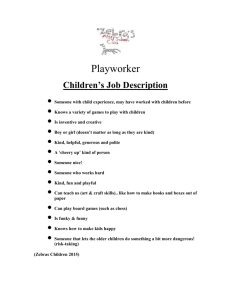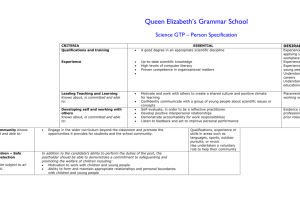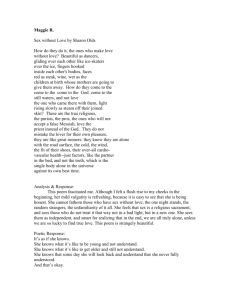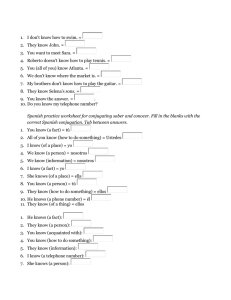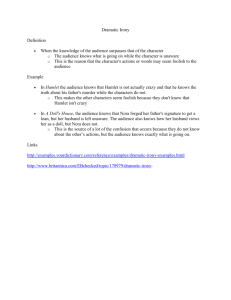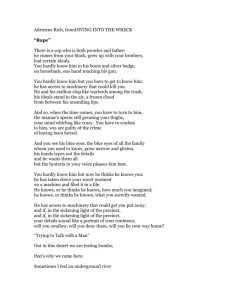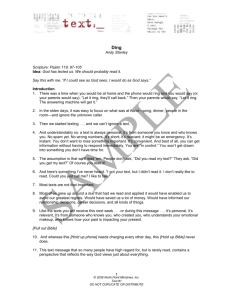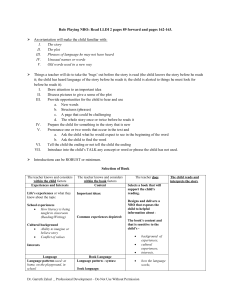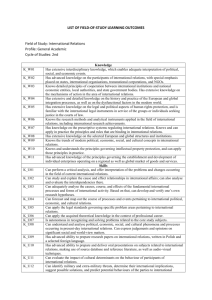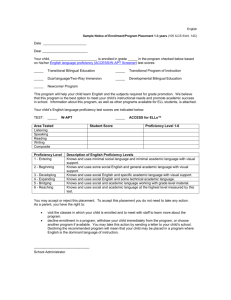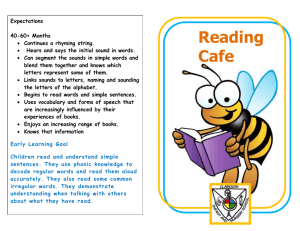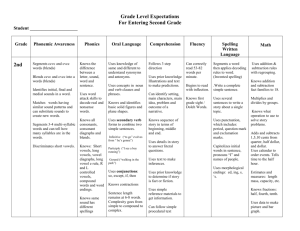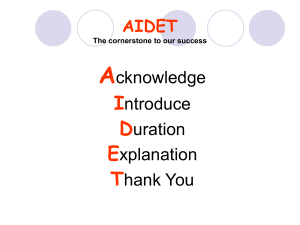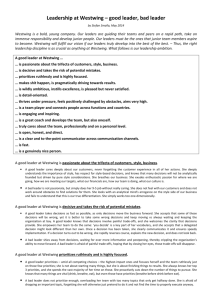Checklist for Assessing Early Literacy Development
advertisement
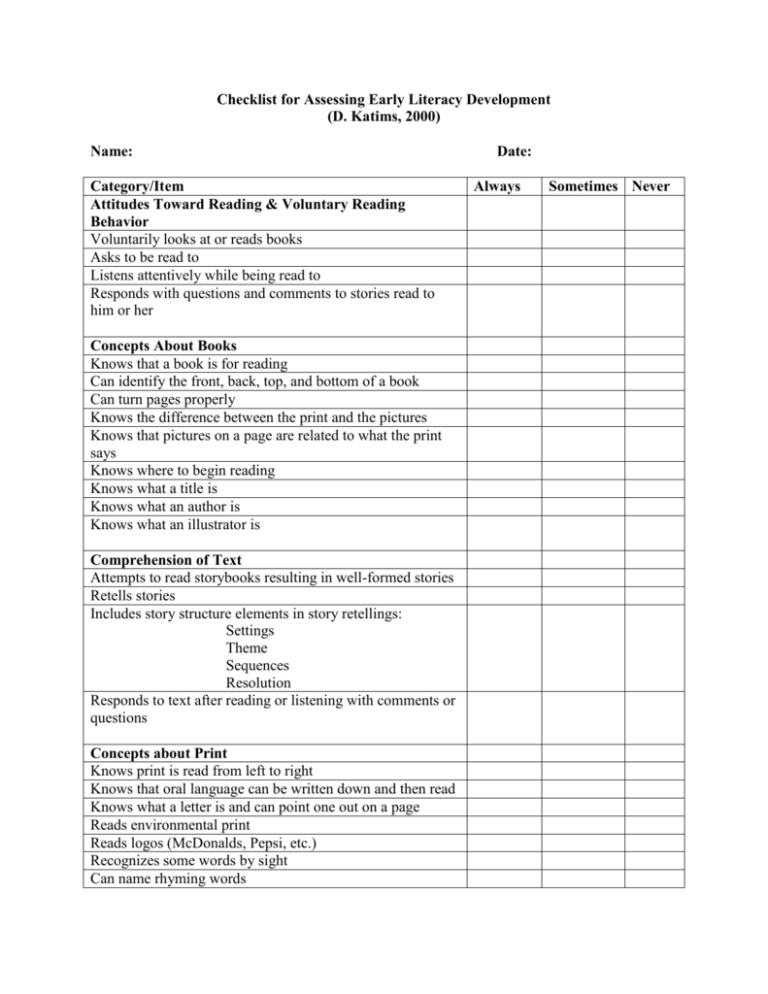
Checklist for Assessing Early Literacy Development (D. Katims, 2000) Name: Category/Item Attitudes Toward Reading & Voluntary Reading Behavior Voluntarily looks at or reads books Asks to be read to Listens attentively while being read to Responds with questions and comments to stories read to him or her Concepts About Books Knows that a book is for reading Can identify the front, back, top, and bottom of a book Can turn pages properly Knows the difference between the print and the pictures Knows that pictures on a page are related to what the print says Knows where to begin reading Knows what a title is Knows what an author is Knows what an illustrator is Comprehension of Text Attempts to read storybooks resulting in well-formed stories Retells stories Includes story structure elements in story retellings: Settings Theme Sequences Resolution Responds to text after reading or listening with comments or questions Concepts about Print Knows print is read from left to right Knows that oral language can be written down and then read Knows what a letter is and can point one out on a page Reads environmental print Reads logos (McDonalds, Pepsi, etc.) Recognizes some words by sight Can name rhyming words Date: Always Sometimes Never Category/Item Can identify and name upper- and lower-case letters of the alphabet Associates consonants and their initial and final sounds (including hard and soft c and g) Associates vowels with their corresponding long and short sounds (a-acorn, apple; e-eagle, egg; I-ice, igloo; o-oats, octopus; u-unicorn, umbrella) Knows the consonant diagraph sounds (ch, ph, sh, th, wh) Can blend and segment phonemes in word Uses context, syntax, and semantics to identify words Can count syllables in words Attempts reading by attending to picture clues and print Guesses and predicts words based on knowledge of soundsymbol correspondence Writing Development Explores with writing materials Dictates stories, sentences or words he or she wants written down Copies letters and words Independently attempts writing to convey meaning, regardless of writing level Can write his or her name Collaborates with others in writing experience Writes for functional purposes Check the level or levels at which the child is writing ___uses drawing for writing ___differentiates between writing and drawing ___uses scribble writing for writing ___uses letter-like forms for writing ___uses learned letters in random fashion for writing ___uses invented spelling for writing ___writes conventionally with conventional spelling Mechanics for Writing Forms uppercase letters legibly Forms lowercase letters legibly Writes from left to right Leaves spaces between words Uses capital letters when necessary Uses periods in appropriate places Uses commas in appropriate places Always Sometimes Never

